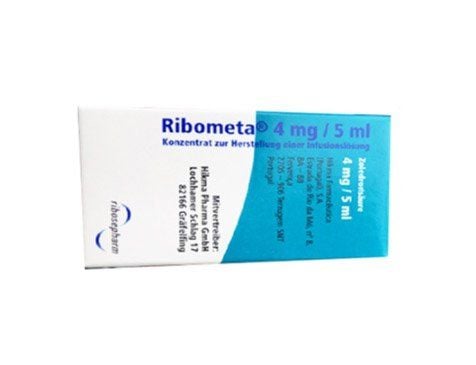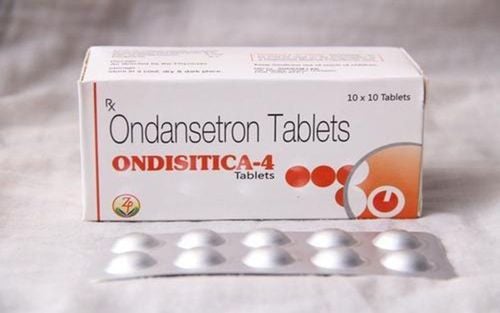This is an automatically translated article.
Multiple myeloma is one of the malignant blood cancers, which seriously affects the health of patients, even leading to death if no timely treatment measures are taken. Multiple myeloma often presents with a variety of symptoms. Signs and symptoms of the disease will vary from person to person.1. What is multiple myeloma?
Multiple myeloma is also known as plasma cell tumor or myeloma. It is called multiple myeloma because it is a cancer of plasma cells in the bone marrow. Plasma cells are cells found in the bone marrow, whose main function is to produce antibodies to protect the body against viruses and other pathogens.The disease occurs when an abnormal myeloma cell rapidly duplicates and disrupts the immune system, replacing other normal myeloma cells. Multiple myeloma does not only manifest in the bone marrow, but can occur in many places in the body, such as bone defects or tumors.
Parts in adults such as the skull, spine, pelvis, ribs or shoulder area are often places where the disease is most active. The remaining areas such as the bones of the hands, forearms, bones of the feet, and legs are usually less affected by the disease.
2. Causes of multiple myeloma
Currently, medicine has not yet concluded the exact cause of the disease, only stopping at risk factors. Multiple myeloma can be a combination of the following risk factors:2.1 Age The majority of people at risk for multiple myeloma are elderly, usually at age 60, with only 5-10 % of patients under 40 years old.
2.2 Gender Men are more likely to get the disease than women
2.3 Race Studies have shown that black people are more likely to get the disease than whites and Asians.
2.4 Chemical Exposure People who are regularly exposed to chemicals such as gasoline, oil, pesticides, benzene, dioxins, rubber, paints and hair dyes are more likely to develop multiple myeloma
2.5 Occupation People who work as carpenters, farmers, tanners, hairdressers, painters or decorators, due to the nature of their work, are often exposed to hazardous chemicals, so the possibility of get sick higher than others
2.6 Exposure to radiation and viruses People who are regularly exposed to radiation beams for a long time or live in a polluted environment, viruses reproduce and grow very susceptible to infection
2.7 Family history Multiple myeloma is one of the hereditary diseases. This means that if you have a family history, there is a high chance that it will be passed on to the next generation.
2.8 Obesity According to research by the American Cancer Society, being overweight and obese is one of the main causes of increasing the risk of multiple myeloma

Thừa cân và béo phì là một trong những nguyên nhân chính làm tăng nguy cơ mắc bệnh đa u tủy
3. Stages of multiple myeloma
Multiple myeloma usually has 4 main stages, including:3.1 Latent stage This stage is also known as Durie-Salmon stage 1. In this stage, myeloma does not cause any symptoms. specific disease. Although myeloma cells have appeared in the body, they have not shown any signs of growing or causing any damage to the bones and kidneys. Therefore, the disease in this stage is difficult to diagnose.
3.2 Stage 1 Entering stage 1, your blood and urine already have a small number of myeloma cells. However, the hemoglobin level is now only slightly lower than normal. A bone X-ray may be normal or show only an affected area.
3.3 Stage 2 At this point, the myeloma cells have increased in a significant number, the hemoglobin content is also significantly reduced compared to the normal level, while the monoclonal antibody and calcium levels in the blood increase beyond the normal range. step. Through X-ray, many areas of bone damage can be detected.
3.4 Stage 3 This is also the final stage of multiple myeloma. During this stage, myeloma cells grow most vigorously, out of control. In addition, the hemoglobin concentration fell to less than 8.5 g/l, while the calcium and monoclonal antibody levels were too high. This disparity causes numerous areas of the bone to be attacked by cancer.
4. Symptoms of Multiple Myeloma

Các dấu hiệu và triệu chứng của bệnh sẽ thay đổi tùy thuộc vào tình trạng bệnh của mỗi người
4.1 Bone pathology Marrow compression, bone pain or fracture are the most common symptoms. Up to 70% of patients have bone resorption due to increased bone resorption. Some factors that influence this process include: Tumor necrosis factor-a (TNF-a), Interleukin 1B, IL-6 and cytokines that stimulate TNF release.
4.2 Anemia About 60% of patients present with symptoms of normochromic, red blood cell anemia. The main cause of this condition is the tumor invasion into the bone marrow, which hinders the production of red blood cells.
4.3 Hypercalcemia Approximately 20% of patients with secondary hypercalcemia are due to increased bone resorption and prolonged immobilization. Symptoms of hypercalcemia include fatigue, nausea, confusion, polyuria, and constipation.
4.4 Renal failure Approximately 20% of patients have signs of renal failure at the time of diagnosis and about 20% present with complications of renal failure in later stages. The main cause of renal failure is Bence Jones protein deposition in the distal tubule, in addition to factors such as dehydration, hypercalcemia, hyperuremia or light chain deposition disease, use of non-steroidal anti-inflammatory drugs. also contribute to kidney failure.
4.5 Infections Patients with multiple myeloma are very susceptible to severe infections. Common causes of infection are Gram (+), Gram (-), Haemophilus influenzae, gamma globulin depletion and granulocytopenia.
In addition to the 5 main symptoms mentioned above, there are some other symptoms of multiple myeloma including:
Enlarged tongue Back pain Skin damage Nerve damage Repeated infections Unexplained weight loss Sadness vomiting Poor vision or loss of vision Weakness, especially in the legs Confusion Constipation, Swollen feet, Problems urinating

Giảm cân không rõ nguyên nhân, buồn nôn là một trong nhiều triệu chứng của đa u tủy
Currently, Vinmec International General Hospital is a leading medical facility in the field of detecting cancer-related diseases and in which multiple myeloma can be treated with specific treatment. by stem cell transplantation in the treatment of multiple myeloma. Hematopoietic stem cell transplantation is the most radical treatment method, the opportunity to help patients with malignant blood diseases, including multiple myeloma, so that the patient can recover and lead a normal life.
Any questions about cancer screening as well as multiple myeloma treatment at Vinmec, please come directly to the hospital or contact HERE for answers.
SEE ALSO:
Stem cell transplant - Revitalizing critical patients Why does stem cell transplant help treat cancer? Vinmec deploys auto-immune-boosting therapy and heat therapy in combination with cancer treatment













